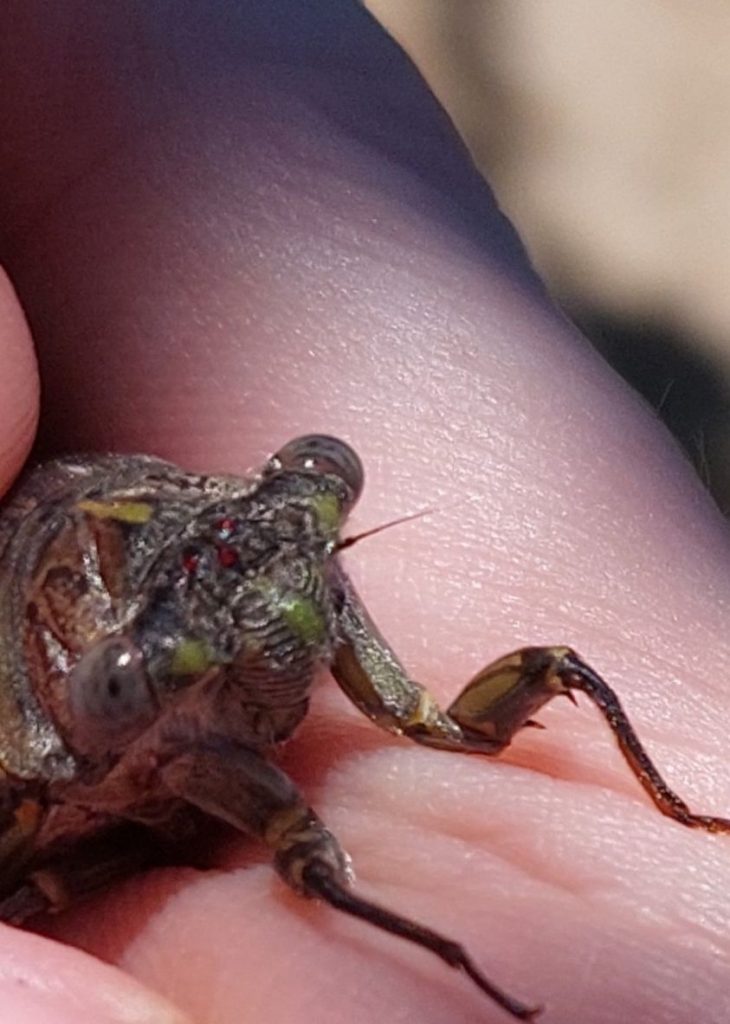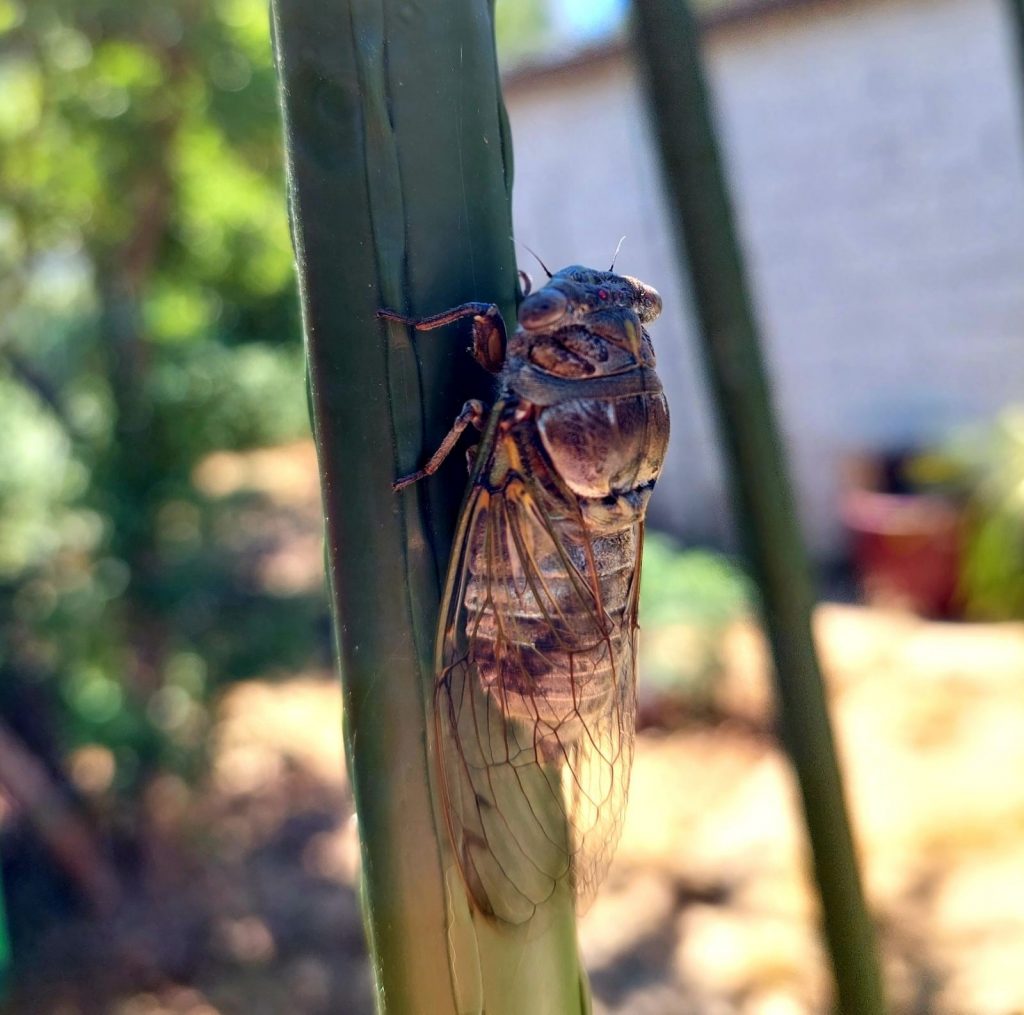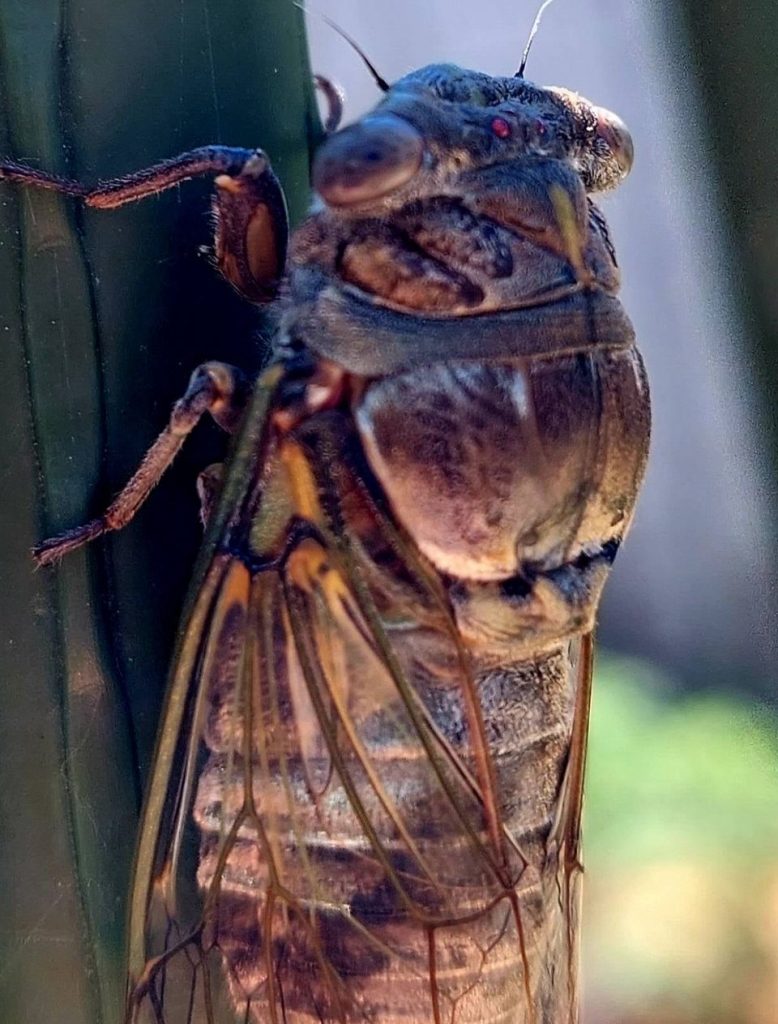Did you know that the highest ever “hum” of a cicada that was recorded was 108.9 decibels? If 150 dB is enough to burst your eardrums and 185-200 dB can kill you, imagine how loud that is! Cicadas have a special organ that is almost unique amongst insects called the tymbal, they contract and release the tymbal muscle. There are many Lyristes plebejus in our garden! All though they make a not very comforting sound, they are good for many things in our ecosystems! Depending on the species and their environment the egg, larva and pupa form of a cicada can vary dramatically. For example, here, in France, the cicada cycle is 1-year, but in the northeastern quarter of the US, there is a 17-year cicada life cycle. Once they emerge adult cicadas, no matter the species, only live for 4-6 weeks! However, this is 4-6 weeks of breeding, reproduction and almost unlimited food for any carnivorous animal (or plant)! For the northeastern US species, this is a once in a lifetime bounty for most! Even though they only come every 17 years they come in their thousands to reproduce, but yet so many surviving to mate and lay their eggs, enough probably have even more in the next 17 years! However, this 17-year cycle can be much riskier than the European 1-year cycle. The 17-year cycle means that the majority of the population of that species depends on the weather, food, predators… of those 4-6 weeks and if there is a change just that year, it can have a huge impact on the cicada population in 17 years time! On the other hand, the 1-year cycle is more sustainable, if there is a temperature drop or predator increase they can come back at it the next year. Even if this happens twice in a row it will not make that much of a difference as it would to the 17-year cycle cicadas. Despite this development difference, their food between species doesn’t vary much. As larva, they eat sap and juices from tree roots and as adults, they trim down tree branches and leaves. This gives more space for birds to eat other insects. Once they have mated, the females lay their eggs in small holes they make in tree branches where they can lay between 200 and 400 eggs! Then, after 6-10 weeks cicada larvae, called nymphs, emerge from the eggs. Then depending on the species the time they spend as nymphs can vary widely, but for the European species, it is about 11 months until the nymphs emerge and turn into adult cicadas. Then the whole life cycle repeats again!



Nika Strok Underwood
